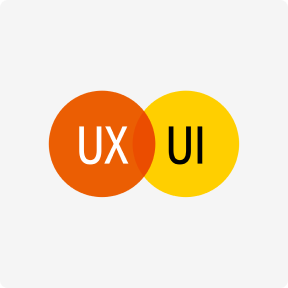New developments, especially large ones, are particularly easy to spot and can serve as a quick visual comparison between regional policies affecting growth, land use, and population densities. For that reason, the findings from this notebook are encapsulated into a simple-to-use, accessible, and deployable app with Plotly https://www.globalcloudteam.com/ Dash. The app uses the powerful analysis capabilities available with RAPIDS, but is controlled through an uncomplicated GUI. In this instance, the vast majority of bike trips appear under 20 minutes. Because of the ability to zoom in, you can also inspect the long tail of durations without creating another query.

Further in the article, I’ll explain six more reasons why you should also start using data visualization. In contrast to text, which has been used as the preferred medium for exchanging information for ages, data visualization provides us a much more interactive approach. It helps us present our ideas without needing words and makes the process much less complicated. In the world of data science, data visualization is much more than a word. It’s a whole process that provides solutions to a lot of problems we’re facing today. Whether it’s big data that we need to analyze or a presentation we need to make for the stakeholders, data visualization always plays a vital role.
Advantages of Data Visualization
Making the best use of it will help you make better decisions and open doors to more learning and faster development. Conversely, AI can also be used to generate textual information from a given image. AI can quickly grasp the information presented in an infographic and summarize the content. It can answer queries about project progress from a project schedule Gantt chart.

Without data visualization, it is challenging to identify the correlations between the relationship of independent variables. By making sense of those independent variables, we can make better business decisions. As the “age of Big Data” kicks into high gear, visualization is an increasingly key tool to make sense of the trillions of rows of data generated every day. Data visualization helps to tell stories by curating data into a form easier to understand, highlighting the trends and outliers. A good visualization tells a story, removing the noise from data and highlighting useful information. We can quickly identify red from blue, and squares from circles.
Related Data Analytics Articles
The most useful skills here are similar to what a text editor brings to a manuscript—the ability to pare things down to their essence. Some design skills will be useful too, whether they’re your own or hired. Data visualization can be applied in a wide range of fields, including business, health care, social sciences, finance, and more. In business, for instance, it’s used to visualize sales trends, customer behavior, and operational efficiency. In health care, it can help track disease spread, analyze patient records, or illustrate health trends. AI applications can also be used to enhance an input media file-based visualization.
FusionCharts can also efficiently process millions of data points. Moreover, with FusionCharts, you can make interactive charts and graphs that are also aesthetically pleasing and engaging. Explanatory data visualizations help you tell this story, and it’s up to you to determine which visualizations will help you to do so most effectively.
The science of data visualization
So it is very easy to observe from this visualization that even though some customers may have huge sales, they are still at a loss. Many business departments implement data visualization software to track their own initiatives. For example, a marketing team might implement the software to monitor the performance of an email campaign, tracking metrics like open rate, click-through rate and conversion rate. The science of data visualization comes from an understanding of how humans gather and process information. Daniel Kahn and Amos Tversky collaborated on research that defined two different methods for gathering and processing information. Data visualization is one of the steps of the data science process, which states that after data has been collected, processed and modeled, it must be visualized for conclusions to be made.

The virtual data layer translates the queries into the appropriate format for the underlying data sources and returns the results to the user or application. Let’s say you have data that you can use to show how a metric changes over time. Can you capture the time-dependent changes or the changes between two points in time with a pie chart? It is what is big data visualization equally unlikely to see such changes with a histogram or a radar chart. But with it, you’ll not only be qualified to do work at a junior level, but you’ll be prepared to learn more advanced data science skills later. Having said that, although data visualization is a somewhat smaller proportion of the job at this level, it’s still important.
Creating The Dashboard That Got Me A Data Analyst Job Offer
Dealing with data is one of the most challenging aspects of an S/4HANA migration as customers must decide what data to move to … With its Cerner acquisition, Oracle sets its sights on creating a national, anonymized patient database — a road filled with …
In advanced analytics, data scientists are creating machine learning algorithms to better compile essential data into visualizations that are easier to understand and interpret. Tools such as Tableau, Microsoft Power BI, Plotly, Sisense, and Qlikview allow you to create graphs, charts, and dashboards for organizations. You’ll want to be able to create several different types of data visualizations, to create outputs for reports, presentations, and more.
Charts and Dashboards: What Are Cross-Platform Dashboards
CareerFoundry’sData Visualizations with Python course is designed to ease you into this vital area of data analytics. When creating visualizations, it’s often the case that less is more. Ultimately, you want your visualizations to be as digestible as possible, and that means trimming away any unnecessary information while presenting key insights clearly and succinctly. The goal is to keep cognitive load to a minimum—that is, the amount of “brainpower” or mental effort it takes to process information.
- You could easily visualize this using a pie chart—and the yellow slice (5%) would be considerably thinner than the red slice (40%)!
- Amid the myriad of visualization options available, tables can be quite striking when combined with other types of charts and graphs on a dashboard.
- Others still might have a knack for presentation, and may be tasked more with presentations and client-facing deliverables.
- Fills the whiteboard walls of his office with conceptual, exploratory visualizations.
- Imagine trying to make sense of a table with thousands of data points.
There should be more talking about graphics and less relying on the graphics to speak for themselves. Tree maps, which display hierarchical data as a set of nested shapes, typically rectangles. Treemaps are great for comparing the proportions between categories via their area size.
Real-Time Charts
Even if the data is complex, your visualizations don’t have to be, so strive for simplicity at all times. Data visualization is important in data science because it helps us make data ‘speak’ and provide all the hidden details it covers. It also helps perform the exploratory analysis quickly, giving a massive boost to data science projects and effective decision-making. Rather than looking at the trends over time, histograms are measuring frequencies instead. These graphs show the distribution of numerical data using an automated data visualization formula to display a range of values that can be easily interpreted. Data visualization takes the information from different markets to give you insights into which audiences to focus your attention on and which ones to stay away from.